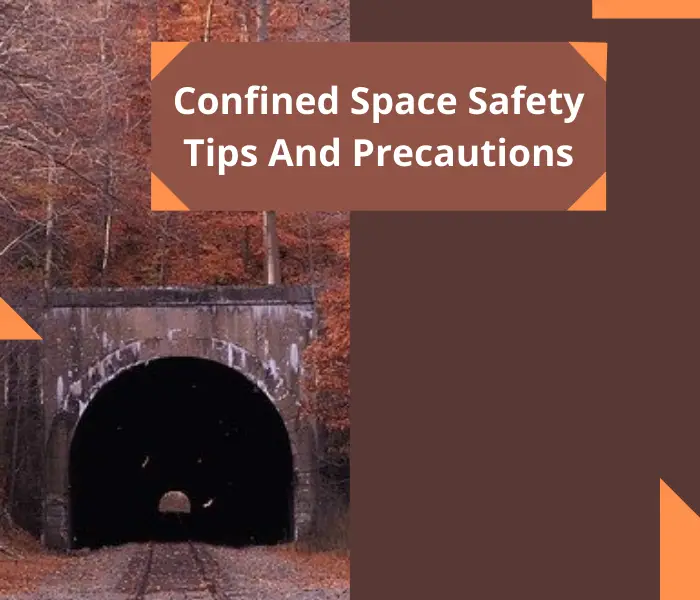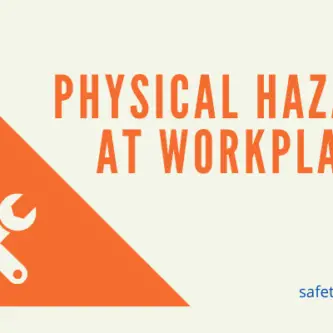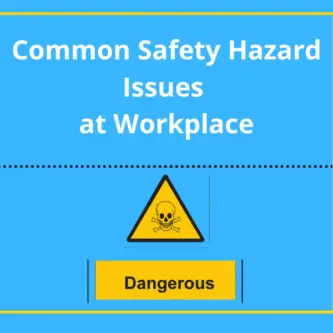Confined space safety is one of the prime concerns for workers. Because different risks and hazards are associated with it. Injuries and even deaths can be caused if not properly handled.
What is Confined Space?
Any structure that is fully or partially enclosed and there is limited access for entry and exit of a person is called a confined space.
These type of workplaces are risky and contains a lot of hazards for workers. Different examples are tunnels, wells, Underground mines and sewers, tanks, and many more.
While different risks associated with confined spaces are hazardous gases, vapors, low oxygen levels, collapsing, and much more.
We will discuss it in detail.Therefore, proper training is mandatory for a person working in a confined space.
What Are The Hazards in a Confined Space?
Different types of hazards are associated with confined space. Some of the hazards exist every time and there is always a risk of happening. While some of them are being created during the work.
So it is always mandatory to have proper attention to it. Like if we take the example of collapsing and oxygen levels hazards always exist. But fire and explosion may occur.
Therefore, workers must get proper training and use personal protective equipment to avoid the hazards and all other associated risks.
Below are some examples of hazards and threats to the confined spaces Safety.
For more Workplace Hazards, Read our articles:
Oxygen Level
One of the prime concerns is the lack of oxygen in the confined space. While the existing level of oxygen reduces to a threatening level if some type of chemical reaction occurs in confined space.
To ensure the confined space safety always ensure oxygen level in the working environment. Make sure that the maximum and minimum oxygen level is between 19.5 and 23%.
Collapsing
As discussed earlier underground mines and tunnels are also type of confined spaces. Therefore, collapsing of such spaces always exist. And it is one of the most and unprotectable hazards.
Poisonous Gases and Fire
Sometimes poisonous gases exist in tunnels, Underground tanks, and mines. Which is another hazard.
Similarly, sometimes inflammable gases exist in confined space, or there exist substances that catch fire. And that is another hazard related to confined spaces. Besides this hot conditions also affect human health and the body.
Excessive Heat
As these places are closed, The danger of Excessive heat stroke. Wearing PPE or lack of ventilation can exacerbate this risk.
How to Ensure Confined Space Safety
To promote a safe work culture in the confined spaces, it is important to perform a complete risk assessment. Because risk assessment can limit the chances of injuries and hazards.
We can reduce the risk in different ways like
- Eliminating the need for anyone to go inside.
- Completely understanding and getting a detailed map before entering into a confined space.
- Test the environment, oxygen level, and whether any hazardous substance exists or not.
- Use proper personal protective equipment (PPE)
- Exercising a rescue and emergency plane.
- Establishing a proper communication channel.
Ways to Improve Confined Space Safety
After the risk assessment, we can start working in spaces like this. Some steps you will need to follow are below.
Get an entry work Permit
According to OSHA, a permit space for working in a confined space will be required. And to get a permit you will have to provide proof of training.
And also you will need to have relevant Personal protective equipment. Similarly, only people with entry permits will be allowed.
Ensure Ventilation
A lower oxygen level is one of the prime concerns for working in confined spaces. So to ensure confined spaces safety proper ventilation is necessary.
Due to proper ventilation, the level of oxygen maintains. Besides this proper testing will be required to check any other type of gases.
For this purpose, you can use air blowers and an air extractor. Please note that test the ventilation system before someone enters the space.
Personal Protective Equipment
Using personal protective equipment can minimize the risk and ensures confined spaces safety. A worker will need to use gloves, glasses, helmets, and other protective equipment.
So that you can safeguard yourself from any type of hazardous chemicals, materials, etc. Besides this proper training is mandatory to use protective equipment in this type of space.
Establishing a Communication Channel
Another tip for confined spaces safety is establishing a communication channel so that employees and workers are constantly monitored and contacted.
You can use different communicative devices like Two ways radios, Hand and rope signals, CCTV, and mobile phones.
Also, train the workers how to communicate with other workers and people outside to stay safe during an emergency situation
First Aid Kit Availability
Confined spaces are more to accidents. While a rescue operation in confined space can take more time. And there is a risk of casualties and even deaths during emergency situations.
Therefore, the availability of first aid kit has prime importance to ensure confined spaces safety and reduce casualties.
Conclusion of Confined space hazards and control measures
Confined space has many hazards, The most common are below:
- Decrease of Oxygen Level.
- Collapsing.
- Poisonous gases.
- Fires and explosions.
- Excessive Heat
confined space safety tips
- Limiting the entry to these places as possible.
- Before entering to this place, Identification and Risk Assessment for the job is essential.
- Prepare permit space for working.
- Only well trained workers are allowed to enter this kind of tasks.
- Ensure Ventilation.
- Test oxygen level before and during the task.
- Ensure lighting.
- Prepare for any emergency situation.
- Personal Protective equipment.





